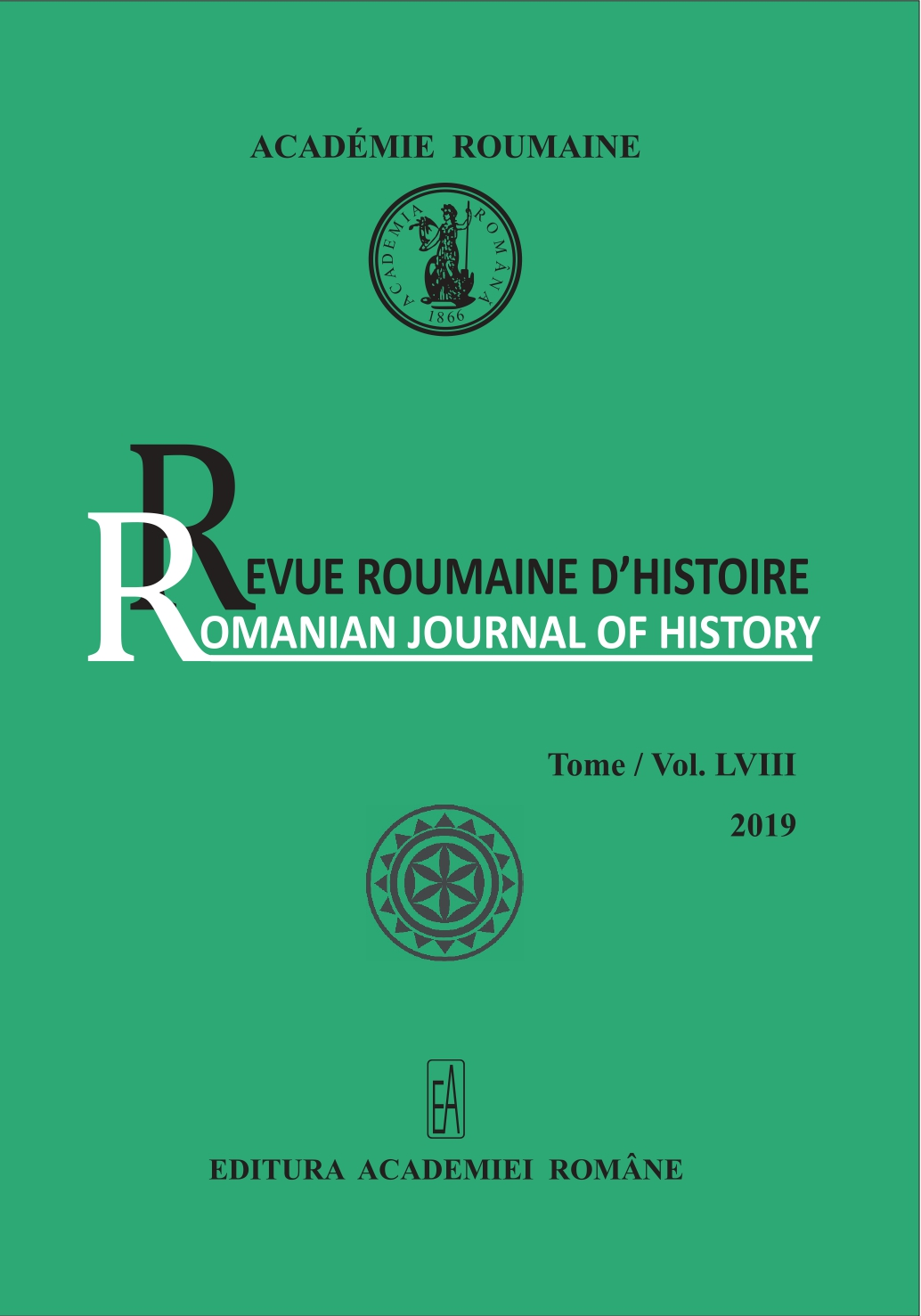The Terminology Reflecting the Ethnic Identity of the Romanian Voivodeships in the Middle Ages and Renaissance
The Terminology Reflecting the Ethnic Identity of the Romanian Voivodeships in the Middle Ages and Renaissance
Author(s): Victor SpineiSubject(s): Ethnohistory, Local History / Microhistory, Middle Ages
Published by: Editura Academiei Române
Keywords: Wallachia; Wallachians / Romanians; Ungrovlachia; Transalpina; Vlachia Transalpina; Bessarabia; Moldavia; Moldovlachia; double / the other / another Wallachia; Great / Little / Upper / Lower Wallachia
Summary/Abstract: Before the formation of the Romanian medieval states, foreign sources called all the autochthonous inhabitants north of the Lower Danube by the term Wallachians, or by related names. As it had been founded earlier, the state entity bordered by the Southern Carpathians and the Danube should have normally kept the name Valachia /Țara Românească only for itself. Due to the fact that the term Valachia had already been extensively used left of the Danube, the Wallachian voivodeship was designated either by an alternative form or by adding a determinative to it: Ungrovlachia, Transalpinum / Transalpina, Vlachia Transalpina, Basarat / Bessarabia.For the purposes of avoiding confusions and marking its individuality, the Romanian territory east of the Oriental Carpathians, known before the fourteenth century under the name Valachia or one of its derivatives, was called Moldavia. As in Wallachia, an important part in imposing the ethnic and geopolitical terminology in the Romanian-speaking territories on the eastern slopes of the Carpathians was played by the Patriarchate in the capital of the Byzantine Empire. The chancery of the Patriarchateof Constantinople was directly involved in the organization process of the superior church hierarchies in Moldavia and imposed the designations Black Wallachia (Μαυροβλαχία), Russian Wallachia (Ρωσοβλαχία), and Moldavian Wallachia (Μολδοβλαχία).The ethnic identity of the two Romanian voivodeships was mentioned in many categories of internal and external sources. In this regard, we would like to point to the syntagmas double / the other / another Wallachia, both / the two Wallachias, etc., which were attested in a significant number of instances in medieval and Renaissance narrative and diplomatic sources. The respective syntagmas reflect the terminological duality of the Romanian voivodeships and the ethnic identity of their majoritypopulation.The awareness about the similarity of the ethnic character of the majority population in the two Romanian voivodeships is equally reflected in the choronyms designating them in Europe. Towards the end of the Middle Ages and at the beginning of the modern era, a limited circulation was enjoyed by other regional terminological varieties of Wallachia as well. Among them were the names Great Wallachia, Little Wallachia, Valachia Superior / Upper Wallachia and Valachia Inferior / Lower Wallachia.Based on their own experience and / or according to bibliographic information, many European scholars, politicians, prelates, and merchants knew that Wallachia and Moldavia were distinct state entities, without territorial and political identity. However, it was clear to them that the populations of the two voivodeships were ethnically identical beyond any doubt. The better informed authors, especially those who had settled in the regions inhabited by the Romanians or in their immediate proximity for a while, in their quality as diplomats, missionaries, members of the military, traders, etc., after having lived in direct contact to local realities, they also noticed the inhabitants’ cultural and confessional similarities. Those with a larger intellectual perspective, acquired by reading scientific treatises or as a result of their connections to renowned scholars of the time, also referred to the ancestry of all Romanians, reflected in the idea of their common descent from Roman colonists.
Journal: Revue Roumaine d’Histoire / Romanian Journal of History
- Issue Year: LVIII/2019
- Issue No: 1-4
- Page Range: 54-178
- Page Count: 126
- Language: English

